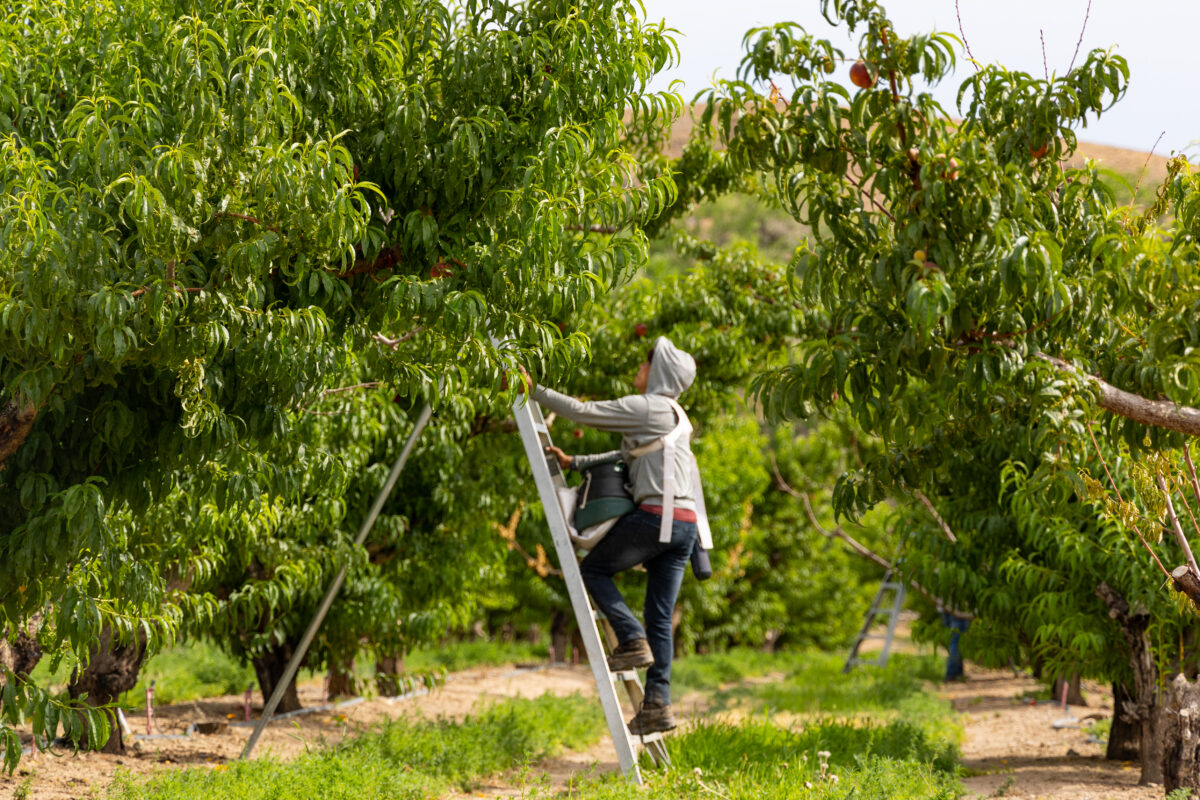Farm Labor Visa Programs Can Help Alleviate Poverty and Slow Undocumented Migration
Dr. Beau Brodbeck
Dr. Fernando Landini

photo credit: Colorado Farm Bureau, Used with Permission
Alfredo lives in a rural Guatemalan village and travels to the U.S. with an H-2A visa each May to work in a nursery, returning each December, in time for Christmas, to spend a few months with family. Over the years, the money he earns has allowed his home to evolve from a mud-slat structure with dirt floors to a modern cement block home with tiled floors, glass windows and running water. In seven seasons he has saved to purchase an acre of land, install a small greenhouse and buy his first vehicle to haul vegetables to the local market. Prior to the visa, he grew corn on a half-acre of rented land to feed his family and worked seasonally on neighboring coffee farms, earning just enough to clothe his family.
This is a common narrative for many Guatemalans participating in legal migration programs aimed at helping U.S. employers fill temporary or seasonal labor gaps. While policy discussions often focus on these programs either replacing American jobs or exploiting vulnerable migrant populations, few have considered the impacts these jobs have on workers and their families. This column shares findings from a recent study we conducted in Guatemala on the impacts of H-2A and H-2B temporary work visa programs on worker livelihoods and migratory intentions (read the full research report here).
It is no secret that local farm labor is increasingly hard to hire. A growing alternative for many employers is hiring workers through the Department of Labor’s H-2A (agricultural) and H-2B (non-agricultural) temporary work visa programs. Participation in H-2A visa programs alone has grown from 75,000 workers in 2010 to 317,000 in 2022, accounting for 10% of employment on U.S. farms.
It is no secret that local farm labor is increasingly hard to hire.
These programs recruit workers predominantly from Mexico, but increasingly from various Central American countries, including Guatemala. Study data collected in Guatemala found that H-2 workers send home approximately $1,000 per month. This is a significant amount of money, considering rural local wages average less than $200 per month—when jobs are available. In the short term, money workers send home is used to better feed, house and provide medical care for their families. “I was able to pay for my dad to have surgery….without me, he might have died,” explained an H-2B forest worker.
The study found that, along most common poverty indices, H-2 workers consistently outperform nonimmigrants, and their families receive greater amounts of money than those of undocumented migrants in many communities. However, it’s in the long term that we saw the greatest impacts of these programs on families and communities. As workers participate over multiple years, investments in land, homes, microenterprises and education begin to generate transformative changes and sources of independent income outside of H-2 employment.
The average education level of H-2 workers is fifth grade. “If there is no money for food tomorrow…you work for food tomorrow. You don’t worry about school,” noted an H-2B worker who left school in third grade to help his father in the fields. There is strong investment in education among H-2 workers and many have seen children finish high school. They also share a strong sense of escaping the ruts of generational poverty by educating their children, expressing the sentiment “our children won’t be like us.”
Additionally, their money trickles into the broader community as they support builders, businesses and periodically hire workers to care for crops. Cumulatively, the economic resources generated by 9,000 Guatemalans participating in H-2 visa programs in 2023 generated an estimated $63 million in funds sent home, dwarfing investments from development agencies like the World Bank. The power of legal migration programs for alleviating poverty and transforming economies has many international development organizations paying attention.
As policymakers look at expanding H-2 visas, it’s important to recognize these programs might slow undocumented migration. Guatemala has some of the highest deportation rates in Latin America, with approximately 222,085 detained at the U.S. border in 2023. However, interviews with workers, community leaders and undocumented migrants suggested a clear preference for migrating with work visas. As one Guatemalan community leader noted, “There was a marked drop in undocumented migration when H-2 recruiters came into the community offering travel with visas.”
Visas allow workers to travel safely to a known job and return home each year to see families. Undocumented migrants, by contrast, have difficult, uncertain journeys lasting an average of 13.6 years, frequently causing disintegration of families. Study results found that visa programs channel migration into legal pathways and can reduce undocumented migration by an estimated 63%. While there will likely never be enough visas to match demand, these programs have the potential to contribute towards mutually beneficial relationships on both sides of the U.S. border while curbing undocumented migration.
Dr. Beau Brodbeck is assistant director for field operations, Alabama Cooperative Extension System, Auburn University. Dr. Fernando Landini is a researcher at Universidad de la Cuenca del Plata.
